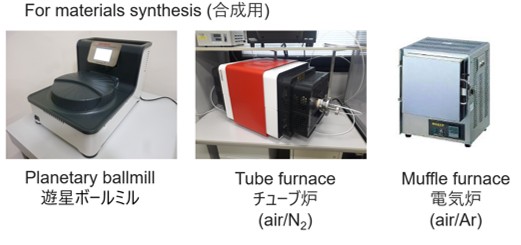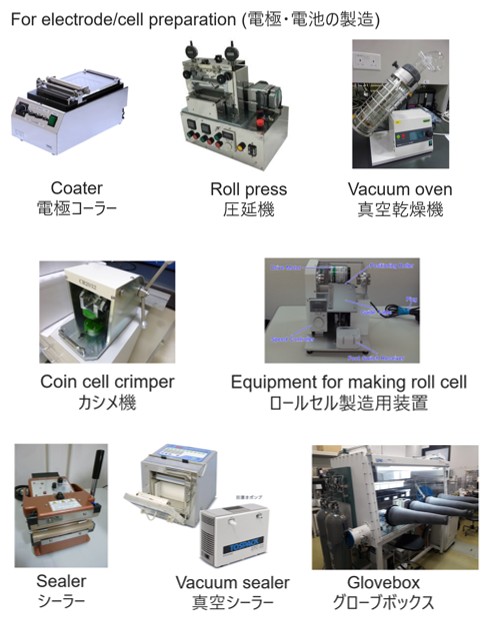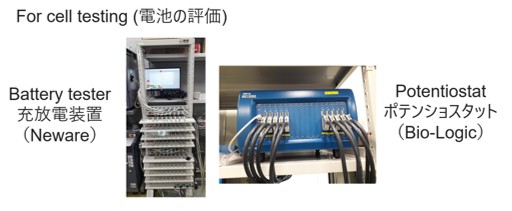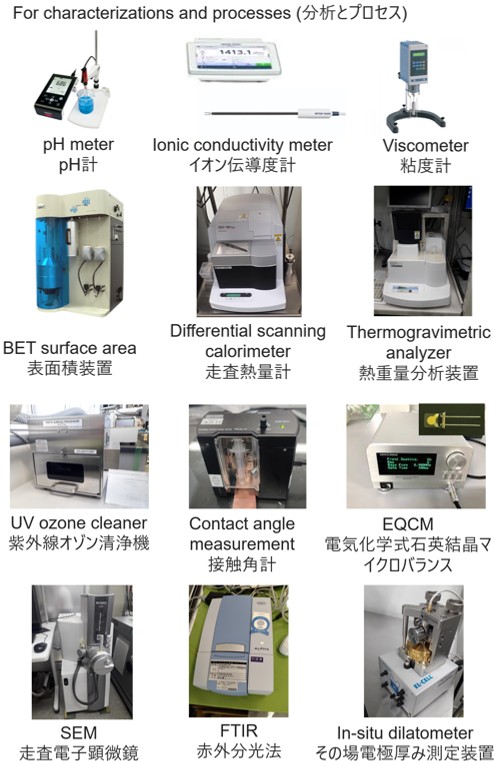Rechargeable Battery Materials Group
Members
Denis YU
SAMURAI
Group Leader, Rechargeable Battery Materials Group, Battery and Cell Materials Field, Research Center for Energy and Environmental Materials (GREEN)

Kei NISHIKAWA
SAMURAI
Principal Researcher, Rechargeable Battery Materials Group, Battery and Cell Materials Field, Research Center for Energy and Environmental Materials (GREEN)

Akihiro NOMURA
SAMURAI
Senior Researcher, Rechargeable Battery Materials Group, Battery and Cell Materials Field, Research Center for Energy and Environmental Materials (GREEN)

Motivation and Outline
The Rechargeable Battery Materials Group aims at synthesizing novel materials for energy storage applications, as well as developing technologies and characterization tools to understand charge-transfer mechanisms and improve materials stability for systems ranging from lithium/sodium-ion batteries to magnesium-ion batteries, dual-ion batteries and lithium-air battery, etc.
1. Lithium/Sodium-ion batteries
Lithium-ion batteries are now widely used for applications ranging from cell phones to electric vehicles. Further increase in energy density will require the use of new materials. Our group focuses on advancing high-capacity Si-based anode for next-generation lithium-ion batteries, developing technologies to suppress volume expansion and improve safety of the battery.
In addition, the limited capacity of the corresponding cathode is also an obstacle to achieve high energy density. Our group aims at designing novel cathode materials with stability structure that can undergo anionic redox reaction with the oxygen atoms in the lattice to realize a specific capacity of more than 200 mAh/g for lithium-ion and sodium-ion battery applications.
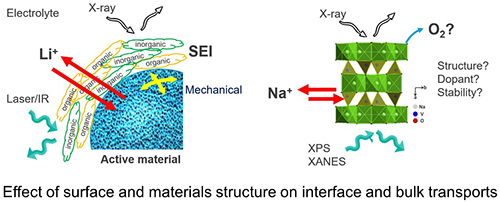
2. Lithium metal anode
Lithium metal is very attractive material as negative electrode of next-generation batteries because of its huge theoretical capacity. However, “dendrite growth” with complicated morphology causes rapid degradation of the electrode and safety problems. Our group aims to control the electrode morphology during charge and discharge and enhance the battery cycle performance through the understanding of the dendrite growth mechanism.
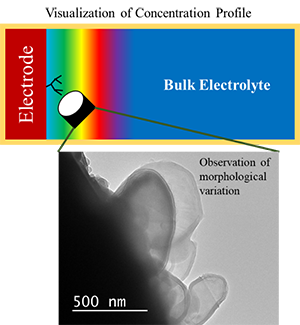 In-situ visualization of concentration profile and TEM observation of electrodeposited Li metal
In-situ visualization of concentration profile and TEM observation of electrodeposited Li metal
3. Lithium-air batteries
Lithium-air battery possesses ultra-high theoretical energy density because of the use of a lithium metal as anode and an air electrode as cathode with oxygen from the atmosphere. However, present-day prototypes still suffer from low rate capability and poor cycle performance. Our group is focusing on re-designing the air electrode and electrolyte to allow fast oxygen transport, facile charge transfer, and improved stability to advance lithium-air batteries towards practical applications.
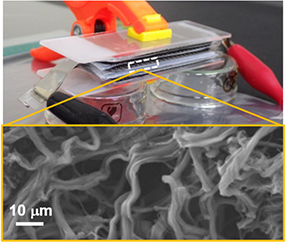
4. Battery systems for alternative applications
Our group is also developing high-power high-safety dual-ion batteries and low-cost metal-metal batteries for alternative applications. Dual-ion batteries rely on the intercalation of both cations and anions into the separate electrodes during charge and discharge. They provide higher energy density than supercapacitors and can be charged and discharged in a few minutes. Our group aims at developing technologies to enhance the cycle stability, energy and power densities of the full cells.
Inexpensive metals can be used as cathode and anode for energy storage applications. Our group is studying the stripping/deposition processes and the interaction of the ions with electrolyte to design next-generation rechargeable metal-metal batteries such as a 3.3 V Cu/Li battery or 1 V aqueous Cu/Zn battery.
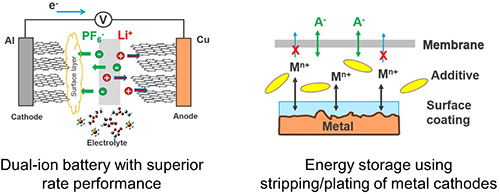
Facilities
